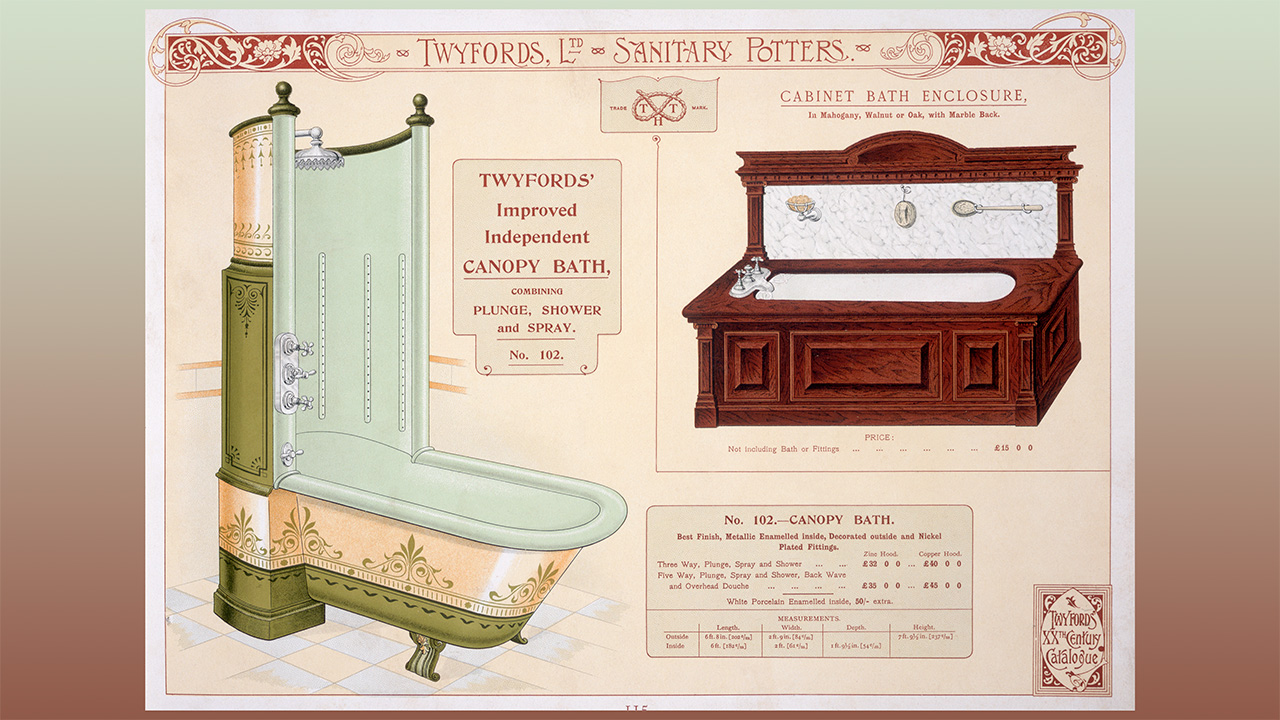I spent a few years in West Texas in the early 1980s, mostly going to college in Lubbock. I’d grown up outside Washington, D.C. and the whole state was like Mars to me. I had a roommate who was a real cowboy with a real cowboy name, Rafe, from the real cowboy town of Fort Stockton. He kept a fake cow head, a bale of hay, and several ropes in our Texas Tech dorm and he'd drag 'em all outside to keep his rodeo skills sharp while away from the ranch. My encounters with dust storms, tumbleweeds, and armadillos during those formative years were revelatory, and being around so many tough guys who could also dance and cook meat let me know I was a long way from home, too.
But none of the region's trappings left me more wide-eyed than the regard-unto-reverence for high school football. The whole concept of Texans worshiping football is now a cliche, but this was years before Buzz Bissinger’s Friday Night Lights let everybody know about a part of the country where schoolboys became hometown and even statewide legends on the playing fields. The level of fanaticism for high school football in Texas was completely new to me, but, well, when in Rome...
Of all the young gods I heard about, none could touch the tales told about a kid named Rick McIvor. He’d played for Fort Stockton High School, just like Rafe. As a freshman, McIvor had come to Fort Stockton (population 8,000) from Fort Davis, a 900-person town in the Texas badlands so small that the high school there only played six-man football. His mother took her boy off the ranch and transferred him to a school that was big enough for him to play 11-on-11. McIvor had no trouble adapting to this, because he could do everything better than everybody else.
The 6-foot-4, 210-pound McIvor would be named to the Texas Sports Writers Association (TSWA) all-state team as a quarterback his senior season, his first as a starter at the position. He’d likewise make the 1979 Parade Magazine All-American team at quarterback, alongside future NFL all-timers Dan Marino and John Elway. McIvor was also all-state at defensive back and placekicker, reportedly making him the first player in Texas ever given statewide honors at three positions. McIvor was also known as the best punter in West Texas, and had a record-setting 63-yard punt in the annual statewide all-star game in Dallas in 1979. He did real well athletically away from the gridiron, too: McIvor was Fort Stockton’s best basketball and baseball player, on the state champion mile-relay team, and a decorated rodeo cowboy with lots of belt buckles from roping and riding. None of this is the most astounding thing about him, at least based on what I heard.
The greatest thing I ever heard about McIvor, and maybe the greatest thing I ever heard about anyone, was about a pregame exercise that Rafe said he witnessed. To show off his quarterback’s great gifts, and maybe to psych out the opposition, their coach had McIvor stand at a goal line and throw a football as far as he could—which was all the way to the other goal line. Yup, the length of the field. A 100-yard toss, or so the story went.
I’d played high school football in Northern Virginia in the same era and was pretty sure that nobody where I came from could throw a football anywhere close to 100 yards. Back home, I'd heard plenty of urban legends related to inhuman athletic feats, which are probably not that far from the ones you heard in your hometown—the one about the basketball player who could leap high enough to pluck a quarter off the top of a backboard and all that. But everything really did seem bigger in Texas to me back then, especially where high school football was concerned. This was decades before cellphone cameras and pics-or-it-didn’t-happen skepticism were the default. I never wasted a second of my life disbelieving tales of McIvor’s heave.
McIvor had a spotty, injury-plagued career quarterbacking the University of Texas, and a short, insignificant stay in the NFL before returning to Fort Davis to work on ranches. He'd later take up a law enforcement career. People who cared about football almost certainly forgot about him as he was crowded out by newer and even more impressive models.
I left the region in 1984 and except for a 12-hour stopover a few springs ago never went back, but McIvor’s legacy was set and sturdy with me. He was the West Texas kid who could throw a football 100 yards. Through the years, whenever the discussion allowed, I’d retell the legend of Rick McIvor. It's a fun story to tell.
It had been a while since I’d thought about McIvor and his golden arm before watching a Packers-Buccaneers game last month. Fox Sports commentator Troy Aikman started riffing on arm strength during the broadcast, and said he saw Bills quarterback Josh Allen as a college senior throw a football 80 yards during his “pro day” workout. Aikman said that was the farthest heave he’d ever seen. My first thought upon hearing Aikman’s gushing about Allen’s 80-yard throw: He’s no Rick McIvor!
But my mulling over Aikman's Allen anecdote didn't stop there. There’s a lot of time and distance between me and West Texas now. As big as the gap between an 80-yard toss and a 100-yarder, even. So my second thought: What if Rick McIvor... was no Rick McIvor?
“Yeah, I did do that,” McIvor told me. I’d called him up to ask if he really threw a football 100 yards.
McIvor, at 60, is now a deputy sheriff in Pecos County, Texas. On the day I found him, he was delivering a prisoner to jail in Fort Stockton, the county seat and site of his greatest sporting glories and legendary long tosses. He says he doesn’t see folks from his glory days much anymore, despite the proximity. “Maybe on Facebook, I hear from them sometimes."
I asked McIvor when he realized his arm was different than everybody else's.
“Hell, I dunno,” he says. “I knew I could always throw a ball. Any ball.”
In confessing to athletic preeminence, McIvor didn’t come off like some sort of Uncle Rico, the character in Napoleon Dynamite who bragged that “back in ‘82” he could “throw a pigskin a quarter-mile” and wants to bet he could throw a ball over a mountain. Others who were around Fort Stockton when he was were more than willing to do McIvor’s bragging for him.
“He could throw it 100 yards,” says Oscar Gallegos, a tight end on the 1977 Fort Stockton team and longtime elected constable in the city. "I saw it."
A childhood neighbor and high school teammate, Chris Sultemeier, remembers a night when he and all the boys on their street got in trouble when McIvor used his cannon to throw a water balloon at a police car driving by.
Gallegos recalls the head coach pulling him and McIvor off the field in practice after McIvor, then the team’s junior backup QB, drilled Gallegos in the head with a bullet pass to settle a score. “I said something to him that made him mad, some four-letter word probably,” Gallegos says, “and it was BOOM! He hits me in the head next play and about knocks my helmet off. We laugh about it now, but it was something. Hell yeah. His arm was different. Like a .44 Magnum.”
In the 1978 season, McIvor's senior year, the Panthers shut out their first eight opponents and ended the regular season undefeated (with a 320-13 point differential) and as the top-ranked team in Texas. Glen Larum was the editor of the Fort Stockton Pioneer, the local newspaper, during McIvor’s reign at the local high school. He was also the paper’s main sportswriter, and Fort Stockton football was the biggest game in town. Larum says John Blocker, head coach of the Fort Stockton Panthers during that era, gave him and the paper “full access” to the 1978 team. (Blocker died in 2012.) So Larum caught lots of practices and “saw every play” during what would turn out to be the greatest season in the school's history.
“I heard the stories of him throwing a football from goal line to goal line,” says Larum, now a novelist living in Austin. “Can’t say I saw it."
All that exposure to McIvor, however, has left Larum willing to buy into the legend of the 100-yard toss.
"I wasn’t out there every day," he says. "Couple of things people forget: McIvor could kick or punt a football about as far as he could throw it and he was a terrific defensive safety. There didn’t seem to be a thing he couldn’t do on a football field. It’s not too much of a stretch to make up the rest.”
Sultemeier, a running back on those Fort Stockton teams, likewise does not remember personally witnessing McIvor throw a football the complete length of the field. But Sultemeier says he and his father had conversations about what made McIvor's arm strength so superior to everybody else's. They concluded it had to be all the rodeo roping, which involved motions and muscles only cowboys would use. Whatever the cause, he says, nobody who saw McIvor at the time would doubt any claim about his arm.
“Here’s a story I told everybody all the time,” says Sultemeier, who played football at West Point after high school. “I watched Rick McIvor throw a pass to [a Fort Stockton receiver] in a game and I know the ball traveled 80 yards in the air. I know it happened. I saw it. So, could you line Rick up before a game, and have him throw it the length of the field? Well, yeah, I could see him do it. I really could. It was unbelievable the cannon he had. Just unbelievable. Never in my life have I seen anybody, pro or college, who could throw a football like Rick McIvor. Nobody. Bar none.”
Word of McIvor’s prodigious talents spread way beyond Fort Stockton during his last year of high school. The campus of the University of Texas at Austin was about 340 miles away; Sultemeier says scouts and coaches from UT showed up at most practices that year. Newspaper archives are full of contemporaneous crowing about his abilities.
The Quad City Times of Davenport, Iowa, ran a column on Jan. 13, 1979 all about McIvor’s recruiting visit to the University of Iowa. The piece detailed how Coach Hayden Fry of the University of Iowa had pinned his future on landing McIvor. “I’ve got to get me a quarterback,” Fry told the newspaper, “and I want the number one kid in Texas.” In the end, as is usually the case, UT got the top guy in Texas. Fry lasted another 20 years at Iowa without him. Unicorns are mythical creatures, mostly.
McIvor’s deeds upon his arrival in Austin make the legend that followed and surrounded him seem possible.
The Santa Fe New Mexican on Sept. 2, 1979 had UT Coach Fred Akers crowing about McIvor’s “rifle,” and noted unspecified reports that McIvor “threw a ball 90 yards.” The Fort Worth Star Telegram on Nov. 5, 1979, columnist Pat Truly detailed with awe a “loosening up” session held a day before UT’s game with Missouri. “McIvor, they say, stood on the 5 yard line, positioned [teammate] Brad Beck at the 20 on the other end of the field and proceeded to play catch with Beck.” Texas receiver Les Koenning told Truly that McIvor’s arm’s reputation preceded his arrival in Austin, and that at first he laughed off the hype about the freshman from Fort Stockton who’d “fool around” and throw a football “70-80 yards.” Then he caught passes from the new kid.
“I didn’t believe it until I saw him do it,“ Koenning said.
Sports Illustrated promoted the legend throughout McIvor’s stay in Austin. A 1981 story described McIvor as being “equipped with a goal-to-goal arm.” Another SI story that same season quoted UT publicist Jones Ramsey gushing to head coach Fred Akers that he’d seen McIvor “wing it 88 yards on the fly.”
"We don't have an 88-yard play," said Akers.
“Let’s put one in!” Ramsey answered.
Kirk Bohls, a longtime writer for the Austin American Statesman, has occasionally typed that McIvor possessed the strongest arm of any quarterback he ever covered. When I asked Bohls about throwing the length of the field, he brought up another of McIvor’s “fooling around” sessions he personally saw.
“I remember the day in practice when he was fooling around and threw a ball 92 yards from one goal line almost to the other,” Bohls said. “My jaw just dropped.”
Throw in a good gust of West Texas wind and/or put on some fan goggles, and those 92 yards could easily stretch from goal line to goal line. Bohls, at least, wants to believe.
But, if the Texas offense ever installed that “88-yard play” the program's publicist requested, Akers never called it. And if there are morals to McIvor’s tale, one of them would be that the arm alone doesn’t make the quarterback. McIvor’s seemingly limitless potential didn’t translate to greatness on the field in college. Injuries, inconsistency, and some reported academic issues kept him from keeping the UT starter’s job.
There were some moments, though. McIvor quarterbacked Texas to a 34-14 win over Oklahoma in the 1981 Red River Rivalry game, which put UT atop the national polls early in the season. And he came off the bench in the second quarter, with the Longhorns down 13-0 against mortal intrastate enemy Texas A&M on Thanksgiving weekend in 1983, to lead UT to a 45-13 rout that’s still talked about. He threw four touchdown passes.
But his run at the school ended on a notably non-mythic note. In the 1984 Cotton Bowl against Georgia, Akers played a hunch and grabbed McIvor off the bench, giving the senior QB his first start in three years. Texas went into the game ranked second in the polls. He played poorly in a 10-9 defeat, the Longhorns’ only loss of the season. Top-ranked Nebraska went on to lose in the Orange Bowl, which means that Longhorns fans of a certain age still blame McIvor for UT’s failure to win that national championship.
Yet in the eyes of pro scouts, the strength of McIvor’s arm, and the residue of that legendary aura, made up for whatever was lacking in his college stats, which amounted to 136 completions in 317 attempts for 2,433 yards with 15 TDs and 19 interceptions. The St. Louis Cardinals took McIvor in the third round of the 1984 NFL draft. He never was able to jump the steady Neil Lomax into the starting lineup, and the team cut him loose after two years. The Los Angeles Rams brought McIvor in for two training camps but he never played a down. NFL.com stats for his career show four passes, zero completions and a final quarterback rating of 19.8.
During our talk, McIvor brought up just one memory from his pro football career. “I threw a ball 100 yards in Seattle,” he says. He says it came before a game during the 1984 preseason. As he tells it, it happened during warmups, before he or his teammates were even dressed. McIvor says he saw some Cardinals lineman having a contest to see who could heave the ball farthest in a pregame warmup, and so he went over and uncorked a bomb from one end zone to the other, just because he could.
“Some of them had good arms,” he says. “But I would beat them.” As he tells the story, he did.
In 2001, after a television ad featured Michael Vick appearing to throw a ball a country mile (it was fake), Sports Illustrated asked John McMullen, manager of the Lexington (Ky.) Clinic Sports Medicine Center, whether it was physically possible for a human to heave a football goal line to goal line. He said yeah.
“With perfect mechanics and sufficient arm strength,” McMullen said, “I think someone could throw a ball 100 or 110 yards."
So it’s conceivable. But has it ever actually happened?
Alleged full-field chuckers are usually young, and tend to come from out-of-the-way places. The 2006 obituary of a guy named Clarence Sypert of Marshall, Texas said that “several” people around town attested that the deceased “could throw a football 100 yards in 1945,” when he was a student at Hallsville High School.
Then there’s Clegg Starks. Dan Magill, longtime sports publicist for the University of Georgia, pushed a story over the second half of the 20th century that Starks, the Bulldogs’ iconic “water boy” from 1910 until his death in 1964, had 100-yard throws. Georgia alum and NFL Hall of Famer Fran Tarkenton helped spread word about Stark’s arm. But Magill, who died in 2014, also wrote that the farthest toss he ever saw Starks make was just over 80 yards.
In a 1970 column, Los Angeles Times sportswriting force Jim Murray said Kenny Washington, who was in the same backfield at UCLA as Jackie Robinson in the late 1930s, was able to go end zone to end zone in college. "He could throw a football 100 yards and hit a baseball 500 feet," Murray wrote. Washington didn’t get much of a chance to showcase his arm in the pros, since the NFL didn’t break its racist “color line” until 1946, when he was signed by the Los Angeles Rams.
Rudy Bukich might be the first NFL quarterback alleged to have end-zone-to-end-zone arm strength. Bukich, who played in the NFL from 1953 to 1968 for the Los Angeles Rams, Chicago Bears, Pittsburgh Steelers, and Washington, died in 2016. An obituary on the website of USC—he won MVP honors after leading the Trojans to victory in the 1953 Rose Bowl—notes that “‘Rifle Rudy’... was able to throw a football 100 yards.” That claim can also be found in Peter King’s Book of Quarterbacks,” where former Bears tight end Mike Ditka said he once witnessed a 100-yard throw from Bukich.” That's as concrete as it gets, though. Sports Illustrated looked into the field-length throwing claims in a 1966 article, when Bukich was with the Bears. “Rumor has it that his fabulous arm can fling a football 100 yards through the air,” they reported, “but [Bukich] denies this, and no one has ever seen him do it.”
Phil Olsen, a native of Nanaimo, British Columbia and former javelin thrower for both the Canadian Olympic team and the University of Tennessee, also was said to have a 100-yard arm. Olsen died in March, and an obituary that appeared in the Times Colonist newspaper of Victoria, B.C., said Olsen “once wowed a Tennessee Vols gridiron crowd of more than 75,000 by throwing a football 100 yards in a half-time demonstration.” In 1976, Olsen threw a javelin a career-best 287-feet-11-inches, or an inch under 96 yards. (The current world record for the javelin is 98.48 meters, a toss of about 108 yards.)
A video of Lamar Jackson in high school that was billed as him throwing 100 yards surfaced a few years ago on social media. In a 2018 interview released by the Baltimore Ravens, Jackson said the clip was authentic and undoctored. If so, it showed him throwing (possibly) from goal line to goal line. It is worth noting here that the video in question has roughly the same production quality as the photos of the Loch Ness Monster and Bigfoot that would pop up back in the day, and also that because it was shot at field level, accurately gauging how far the ball travels is impossible. According to the Ravens’ video about the long toss, Jackson told the team that nowadays he could only throw it “about 70 yards.” (Though I was unable to find any research into when quarterbacks’ arms start to go, a study of baseball pitchers published in 2012 by FanGraphs determined that the average velocity of a big-league fastball didn’t typically start to taper off until a hurler was 32 years old. Jackson was 21 in 2018.)
Patrick Mahomes, who has been known to unleash 80-yard tosses in warmups, said last year he thought he might have a chance at a 100-yarder, but only if the throw came in Mexico City, where he thought he might get a sort of Bob Beamon bump from the altitude and thin air there. The Kansas City Chiefs played a preseason game against the Los Angeles Chargers south of the border in 2019, but Mahomes didn’t attempt such a feat.
Archie Manning has been around generations of quarterbacks, at every level of football. He was a pigskin prodigy growing up in Mississippi, and went on to become a two-time All-American QB at Ole Miss and a two-time Pro Bowler with the New Orleans Saints. He’s also the father of Peyton Manning and Eli Manning, and has run the Manning Passing Academy, the best-known quarterback school in the country, for the last quarter-century. I asked Manning if he knew of anybody who could throw a ball from goal line to goal line.
“I have never seen anyone throw a football 100 yards,” Manning said. “I’m not going to say it can’t be done, but it would be difficult.”
As for what quarterbacks in today’s game might come closest, Manning names Detroit Lions quarterback Matthew Stafford, who like McIvor was once a schoolboy football phenom in Texas, and (as Aikman did) Josh Allen. So I asked them.
Asked if he could throw end zone to end zone, Stafford says: Nah.
“The longest I’ve thrown it was probably about 80 yards, but not totally sure,” Stafford responded through a Lions spokesperson. “That was back when I was a young buck slinging it around. Probably wouldn’t be able to anymore right now. But 80 is probably the longest.”
Allen, the guy who Aikman saw throw 80 yards at a workout in college, did not respond to requests made through the Buffalo Bills media staff. Draw your own conclusions.
The legend of McIvor’s arm has legs. In 2008, he ran for sheriff of Jeff Davis County, Texas, a county that is both bigger than Rhode Island and whose population sits around 2,200; it's where he lived before moving to Fort Stockton. None of the newbie candidate's attributes got more attention than his folkloric right wing. McIvor's vintage athletic exploits became a focus of news coverage of his campaign. The San Antonio Express-News described him as “former high school football legend... who supposedly would warm up for games at Fort Stockton by throwing from one goal line to the other.” The Austin American-Statesman’s report on his sheriff campaign, headlined "The Long Arm of the Law," said the candidate “once aired a football 98 yards in the Seattle Kingdome.” He won with 71 percent of the vote, and then got 80 percent when running for re-election in 2012.
While serving as sheriff, he also coached his son, Maverick McIvor, in youth football in Fort Davis. Maverick played six-man football there, the same game as his father had played as a lad. McIvor says he was able to show his boy flashes of what his arm could once do in his new gig as coach. “In my forties, I could still throw it 70 [yards],” he says. McIvor says he hasn’t tried throwing for distance in years, but guesses with a little practice he “could still hit 50.”
“But it would hurt,” he says. “Hell yeah, it would hurt.”
After Maverick’s freshman year, McIvor decided in 2016 he would not run for re-election. He also decided Maverick needed another coach. He moved his family from Fort Davis to San Angelo, a town 250 miles east. This migration was motivated by the same thing that caused McIvor’s mom to leave Fort Davis for Fort Stockton all those years ago: a desire for a son to play 11-man football, the national pastime of Texas. Maverick enrolled at San Angelo Central.
The transfer from the small town of Fort Davis adapted to the big-city game just as wondrously as his dad once did. Maverick would go on to lead San Angelo Central to an undefeated regular season as a junior in 2017, just as Rick had in Fort Stockton four decades earlier. An injury wiped out Maverick’s senior year of high school, but he was still among the hottest QB recruits in the football-crazy state and had offers nationwide. The son, too, eventually decided to shun out-of-state suitors and accept an offer from Texas Tech. Along with being the place where I first heard about his father, the school has been a hotbed of quarterback talent in recent years; when Maverick committed, reporter Samuel Sutton of the San Angelo Standard-Times called him "the Red Raiders' highest-ranked quarterback signee since Patrick Mahomes." He’s now a redshirt freshman and backup at Tech, awaiting his turn.
Maverick’s exposure got folks recounting his dad’s deeds. The legend of Rick McIvor remains stout, to use a word Rafe used to describe Texas tough guys, including his Fort Stockton teammate. A 2017 story about the son trying to follow in the father’s footsteps in the New York Daily News said the elder McIvor "once threw a ball 100 yards in the air, from goal line to goal line." The legend has been printed so many times that it's at least accepted as a close cousin to the truth.
Larum says he was in San Angelo a couple years ago, and went along with relatives to a high school football game because that’s what folks in West Texas still do on Friday nights. Maverick McIvor happened to be playing.
“Guys around us in the stands were saying, ‘He can throw the ball 70 yards,’” Larum says. “‘But his Dad could throw it farther.’”
Hell yes he could. Maybe even 30 yards farther. It's hard to say.





